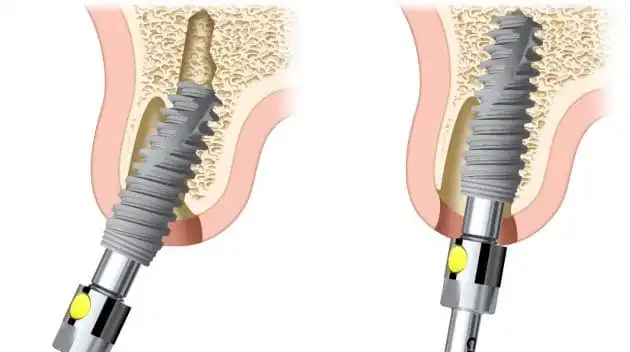Dental implants are a procedure where you insert false teeth where there are missing teeth
It can be a single tooth or a bridge. The new teeth are fixed by letting a titanium screw grow into the jawbone, and then attach to a crown or bridge.
This is a treatment our specialists in prosthetics and bite function and in periodontics perform daily, and we can dare to say that they have perfected over many years.
Christiania tannlegesenter here in Oslo has its own department for difficult cases and accepts patients with referral from colleagues across the country. The treatment is usually done in a waking state, but we also offer the treatment done in sedation or anesthesia.
Implants – what are they made of?
Loss of teeth can be both daunting and uncomfortable for a person. However, it is possible to replace almost all missing teeth with implants.
The implants are made of titanium. Titanium is used because of its good properties. It is biocompatible, which makes the screws you use tighten in the jaw. This provides a stable root for a new dental crown, which is thus fixed in the implant. Teeth bridges can be attached to the titanium implant in the same way. This is tailored to the patient’s wishes and needs.
Before performing the implant treatment
We need to do a thorough examination of the patient’s general health. Factors such as illness, medication and smoking can affect the outcome of treatment and must be taken into consideration.
So-called local conditions, such as type and multiple bone tissue, distance to the sinus in the upper jaw and the nerve duct in the lower jaw, are carefully considered. We usually do several different x-rays to get as accurate a picture of the local conditions as possible.
The most important thing is that the patient is constantly aware of the treatment plan and feels well informed. Therefore, we set aside plenty of time for this before any treatment.





